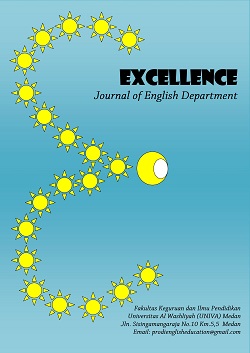THE EFFECT OF MIND MAPPING TO STUDENTS’ ABILITY IN READING COMPREHENSION AT THE EIGHTH GRADE STUDENTS OF SMP SWASTA AL-MUKMIN
DOI:
https://doi.org/10.47662/ejeee.v2i1.336Keywords:
mind mapping, students’ ability, reading comprehensionAbstract
The students of the eighth grade at SMP Swasta Al-Mukmin had difficulty in understanding the text which caused them could not find the main essence of the text. Thus, this research was conducted to know the effect of mind mapping on students’ ability in reading comprehension. This research was conducted using a quantitative quasi experimental design. The sample was divided into two groups, namely experimental group and control group which consisted of 35 students for each. This research used pre-test and post-test in the form of reading comprehension test as the research instrument. The research result concluded that the students who were taught by mind mapping had a better reading comprehension. The data analysis showed the pre-test mean score of experimental group was 55.4 while the control group was 54.5 and the score was increased after applying mind mapping. The post-test mean score of experimental group was 77.7 and 69.5 for control group. The value of mean score of both groups was calculated using T-test. It was obtained the value of T-count was 3.96 while T-table was 1.66 under the degree of freedom 68 and the degree of significance 5%. Since T-count value was higher than T-table value, the hypotheses were proved. Therefore, it is stated that Ha (alternative hypothesis) was accepted and Ho (null hypothesis) was rejected. Based on this research result, it is suggested that the English teachers apply the mind mapping technique since this technique is one of many ways teachers can apply to enhance students reading comprehension of texts easily and efficiently.
References
Suyanto, Adi. (2015). The Effectiveness of Mind mapping in Improving Students' Writing Skill Viewed from Their IQ. IJEE (Indonesian Journal of English Education), 2(2), 101-119
https://journal.uinjkt.ac.id/index.php/ijee/article/view/3089/pdf
Anderson, Lorin. W. (2003). Classroom Assesment. Bloomington: Lawrence Elbaum.
Patria, R., Sukirlan, M., & Simanjuntak, E. G. (2013). Increasing Students’ Reading Comprehension through Mind Mapping Technique from Narrative Text.
https://media.neliti.com/media/publications/192656-EN-none.pdf
Burnes and Page, G. (1991). Insight Strategies for Teaching Reading. New York: Charles E. Merril Publishing Company.
Creswell, John W. (2008). Educational Research: planning, conducting, and evaluating qualitative and quantitative approaches. London: Sage.
Heilman, A.W. (1981). Principles and Practices of Teaching Reading. Columbus:
Hornby, AS. (1995). Oxford Advance Learner’s Dictionary of Current English.
James, H. McMillan and Sally, Schumacher. (2006). Research in Education Language (6th ed).
Kamelia, A., Agustina, H. N., & Sudarmaji, I. (2018). The Use of Mind Mapping on Improving Students’ Writing Ability at Tenth Grade of SMAN 7 Kota Tangerang in the Academic Year of 2018/2019. PELITA: Jurnal Penelitian dan Karya Ilmiah. Vol.2 http://ejournal.unis.ac.id/index.php/pelita/article/view/46/39
Lastari, Ni Kadek Herna and Saraswati, Putu Ritra Trees Ari Kartika Hadi. (2018). The Use of Mind Mapping to Improve Writing Skill of the Eighth Grade Students of Junior High School. Journal of Applied Studies in Language. https://ojs.pnb.ac.id/index.php/JASL/article/view/1057
Panggabean, W., Lubis, F., & Lubis, R. F. (2019). Mind Mapping on Students’ Writing Descriptive Text. English Education: English Journal for Teaching and Learning. http://jurnal.iain-padangsidimpuan.ac.id/index.php/EEJ/article/view/2233
Downloads
Published
Issue
Section
License
Copyright (c) 2022 EXCELLENCE: Journal of English and English Education

This work is licensed under a Creative Commons Attribution-NonCommercial-ShareAlike 4.0 International License.






